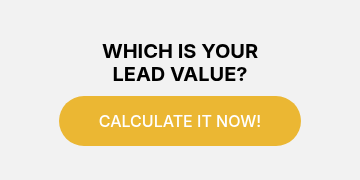In a world saturated with advertisements, modern buyers are tuning out traditional sales-driven marketing. They are seeking value for their time, and this has led to the rise of educational content marketing.
What is Educational Content Marketing?
Unlike other marketing that focuses on your company and the benefits that you can offer, educational content marketing focuses on providing value to your potential customers. It provides answers, insights, and value without the immediate expectation of a sale. This form of marketing can take many forms such as blog posts, videos, case studies, and even social media posts. The primary goal is to form a connection and build trust by offering helpful, relevant information that meets your audience’s needs.
The Benefits of Education Content Marketing
One of the biggest challenges in marketing is ranking in the search results. Everyone wants to be the top result in queries like “Landscapers near me” however, that is a highly competitive market and often requires paid marketing to rank highly. Educational content can help you to achieve organic traffic by answering the questions that your customers are searching for. “What to expect from a landscaper? When do you need a landscaper? How to control weed?” These long-tail keywords are SEO gold.
Search engines prioritize helpful, relevant answers; exactly what educational content provides.
Educational Content also builds your credibility and trustworthiness. When you consistently offer valuable information, you position yourself as a trusted expert. You’re helping your audience before asking for anything in return.
Be honest, do you mute commercials? I certainly do. This is because we are inundated with marketing everywhere we go and unless we are gripped, we will often tune it out. Educational content doesn’t feel like marketing, it feels like learning. When your audience is engaged, they’re more likely to stick around, trust you, and eventually convert.

How to Use Educational Content in Marketing
Audience First: Understand their Pain Points
Start with your audience. Who are they? What challenges are they facing?
Use the Hero Mission Strategy:
- Who is your Hero?
- What Mission are they on?
- What is the Story’s friction points?
Once you know their pain points, you can create content that resonates with your audience, answers their questions, and address the concerns they might have.
Teaching vs. Selling: Find the Right Balance
When building educational content don’t start by trying to sell. Your audience came to you to learn and if they aren’t receiving value they will go back to Google and try again. Your content should be focused on providing value to your reader. With that in mind, you can include calls to action that lead your reader to the solution you are offering. When you create high quality content your customer will trust you to provide high quality solutions.
Consistency and Quality Content Creation
Publishing consistently helps build a content library and positions you as a thought leader. But quality matters. High-value content that’s well-researched, original, and solution-focused will keep your audience coming back.
Creating Compelling Educational Content
Choosing the Right Content Formats
Blog Posts
Blog posts typically work best for in depth insights or questions that require longer answers. Blog posts are going to be best for SEO as they have many keywords for search engines to pick up on and promote. Blog posts can also imbed infographics and short videos to strengthen them and diversify your SEO reach on the same topic.
Video Content
As a medium video has only gotten more popular with YouTube being one of the largest search engines in the world. Providing Video results can help to engage viewers both visually and auditorily in a way not possible in other formats. If you are looking to share a story or visual demonstration video is a great format.
Infographics
Infographics can help simplify things down into an easy to digest format that can be easily shared and found in image searches. These can be used as supplementary images in blog post or even posted independently on social media.
Webinars and workshops
Webinars and workshops are great for building interactive learning and forming direct connections that can turn into sales or partnerships. They are also a great long term tool as they can be recorded and utilized beyond the initial use.
The Power of Storytelling in Educational Content Marketing
A great way to keep your audience engaged is through storytelling. By bringing your audience in on a journey, you can walk with them emotionally. This can build customer trust and brand awareness. Research shows that people remember stories more than facts so by incorporating storytelling into your content you stay on your audience’s mind longer than you would without.
Enhancing Content with Multimedia and Visuals
When faced with a large wall of text many readers will be overwhelmed or lose interest leading to engagement drop offs. You can easily combat this by taking a multimedia approach to your content. Something as simple as an infographic can visually stimulate your audience and reengaging them in your content. Some other media you can include is video, images, and interactive elements.

Integrating Educational Content into Your Marketing Strategy
Educational content should align with your sales funnel:
- Awareness Stage: Informational blog posts and social media content
- Consideration Stage: Webinars, case studies, and detailed guides
- Decision Stage: Expert Interviews, Product Comparisons, and FAQs.
Cross Promotion and Multi-Channel Content Marketing
To get the most out of your work you should be Cross Promoting and reutilizing your content. After writing a new blog post you can promote it on social media, feature it on your website, and share it with your newsletter subscribers. This will help it reach the farthest. You can also repurpose your content into a new format. Turn a top preforming blog post from years ago into a video that can reach a new audience in a new way.
Measuring the Impact of Educational Content: Marketing with Key Engagement Metrics
Like all your content you should be aware of the engagement metrics that can tell you how well a post is performing. Metrics like time on page, shares, comments, lead generation, downloads, and clicks help you to assess how well a post is doing. This information is key to refining your strategy, so you continue to create higher quality content.
Conversion Tracking and ROI Measurement
Measure performance with tools like Google Analytics and CRM attribution. Key metrics include:
- Form completions
- Click-through rates on CTAs
- Sales attributed to content via attribution models
- Educational content contributes to long-term success by improving retention and lifetime customer value.
Success Stories and Case Studies
HubSpot is one of the premier SEO and CRM tools in part because of their large offering of free guides and certifications
Common Questions about Marketing with Educational Content
-
What are the most common Pitfalls to avoid in Educational Marketing?
-
Avoid turning your educational content into a sales pitch or pivoting too far into technical terms that your audience may not be familiar with. The best educational marketing will meet your audience where they are at and provide value.
-
What are the best practices for balancing educational content with promotional marketing
-
A good rule of thumb is the 80/ 20 rule wherein 80% of your content is educational, 20% is promotional. Adjust as needed, but always lead with value.
-
How can I ensure my educational content stands out in a saturated market
-
Focus on long-tail keywords and niche questions. The more specific and useful your content, the better it will perform.
-
How can I effectively reach and engage my target audience with educational content
-
Use SEO best practices, promote across channels, and consider paid amplification for high-value pieces.
Why Educational Content Marketing is Here to Stay
The internet is growing everyday, and marketing is everywhere. To avoid being ignored in the shuffle you need to stand out by providing your audience with value. With high value content you will not only stand out but be sought out.
Ready to turn your content into a growth engine?
If your current marketing strategy feels more like noise than traction, it’s time to pivot. Educational content doesn’t just drive traffic, it builds trust, answers real questions, and positions your brand as the guide your audience is looking for.
Want help getting started?
Explore our Content Strategy Guide to learn how to create a content mix that informs, engages, and converts. Or reach out today to see how PIC can help you build a content strategy that actually moves the needle.
















